Emre Arslan
Experimental Performances of mmWave RIS-assisted 5G-Advanced Wireless Deployments in Urban Environments
Jun 06, 2025Abstract:Reconfigurable intelligent surface (RIS) has emerged as a groundbreaking technology for 6G wireless communication networks, enabling cost-effective control over wireless propagation environment. By dynamically manipulating its codebook so as to deflect the direction of the reflected electromagnetic wave, RIS can achieve enhanced signal quality, extended coverage, and interference mitigation. This study presents experimental performance of ZTE Dynamic 2.0 RIS products through a series of real-world tests conducted on Turkcell's millimeter-wave (mmWave) testbed. The evaluation involves network coverage extension in urban areas, multi-user efficiency, and the integration of virtual reality technology to support immersive applications in next-generation 6G networks. Through a comprehensive measurement-based analysis, the performance of the RIS product is demonstrated, highlighting its potential to address critical challenges in mmWave communications and to enable advanced 6G use cases.
RIS Size Determination Across Frequencies and Deployment Scenarios: A Simulation-Based Study
Jun 06, 2025Abstract:Despite the growing interest in the integration of reconfigurable intelligent surfaces (RIS) into next-generation wireless communications systems, a critical gap remains in understanding what the dimensions of an RIS must be to provide meaningful performance gains across realistic deployment scenarios. This paper addresses this challenge by presenting a practical and scenario-aware methodology for determining optimal RIS dimensions, tailored to specific frequency bands, environments, and use cases. Leveraging a realistic simulation model that incorporates angular scattering characteristics, practical network node locations, and propagation constraints, we evaluate the RIS-assisted performance in a diverse set of configurations. For selected use-cases, we quantify key performance indicators such as average signal-to-noise ratio and outage probability, and we demonstrate how RIS size impacts system reliability. Our findings show that RIS deployment effectiveness is highly sensitive to both physical size and geometric placement, and that there is no one-size-fits-all solution. The proposed framework, supported by detailed use case tables and validated through comprehensive simulations, offers design guidelines for operators and vendors seeking to deploy RIS in practical wireless network settings.
Turbo-GS: Accelerating 3D Gaussian Fitting for High-Quality Radiance Fields
Dec 18, 2024



Abstract:Novel-view synthesis is an important problem in computer vision with applications in 3D reconstruction, mixed reality, and robotics. Recent methods like 3D Gaussian Splatting (3DGS) have become the preferred method for this task, providing high-quality novel views in real time. However, the training time of a 3DGS model is slow, often taking 30 minutes for a scene with 200 views. In contrast, our goal is to reduce the optimization time by training for fewer steps while maintaining high rendering quality. Specifically, we combine the guidance from both the position error and the appearance error to achieve a more effective densification. To balance the rate between adding new Gaussians and fitting old Gaussians, we develop a convergence-aware budget control mechanism. Moreover, to make the densification process more reliable, we selectively add new Gaussians from mostly visited regions. With these designs, we reduce the Gaussian optimization steps to one-third of the previous approach while achieving a comparable or even better novel view rendering quality. To further facilitate the rapid fitting of 4K resolution images, we introduce a dilation-based rendering technique. Our method, Turbo-GS, speeds up optimization for typical scenes and scales well to high-resolution (4K) scenarios on standard datasets. Through extensive experiments, we show that our method is significantly faster in optimization than other methods while retaining quality. Project page: https://ivl.cs.brown.edu/research/turbo-gs.
Hybrid Reconfigurable Intelligent Surface Enabled Over the Air Index Modulation
Jul 12, 2024Abstract:Users' desire for enhanced performance drive the inevitable technological progress on vertical applications in wireless communication systems. To meet these demands, researchers vigorously investigate potential 6G and beyond technologies and solutions. Reconfigurable intelligent surfaces (RISs) have risen in popularity and attracted the attention of academia as well as industry and seem to be a promising candidate for 6G technology. RISs are reflective metamaterials with many configurable elements consisting of pin diodes that have the ability to manipulate the impinging signals' properties, hence, enabling some sort of virtual control over the wireless channel. In this paper, we propose a novel over-the-air index modulation (IM) scheme through the use of a hybrid RIS with active and passive partitions to convey additional IM bits over-the-air. In addition we propose another modified scheme that allows the transmission for even more IM bits but at the expense of certain trade-offs. First, we present the system model for both of the proposed schemes. Furthermore, comprehensive computer simulation results are provided and discussed presenting the superior bit error rate (BER) performance and additional benefits of the proposed systems compared to similar benchmarks.
Reconfigurable Intelligent Surface-Enabled Downlink NOMA
Jan 09, 2024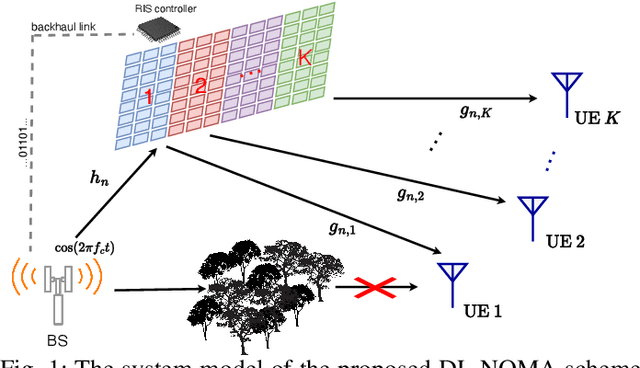
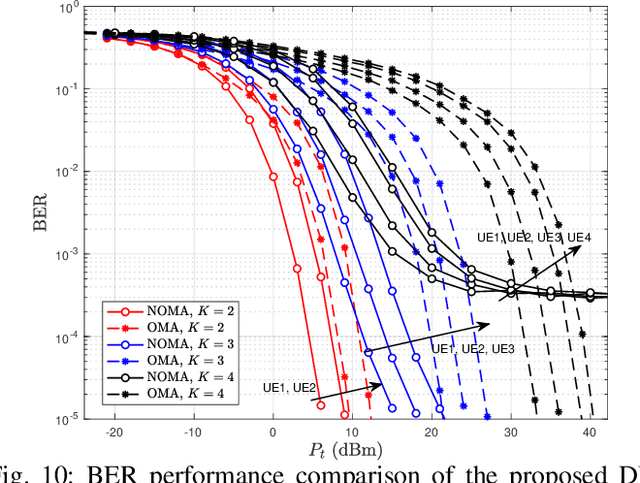
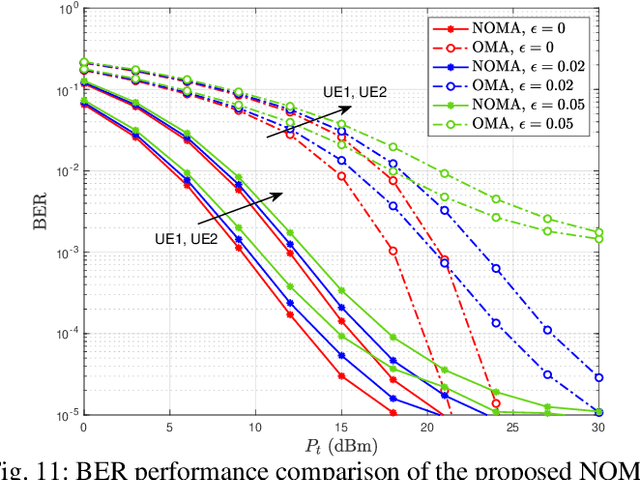
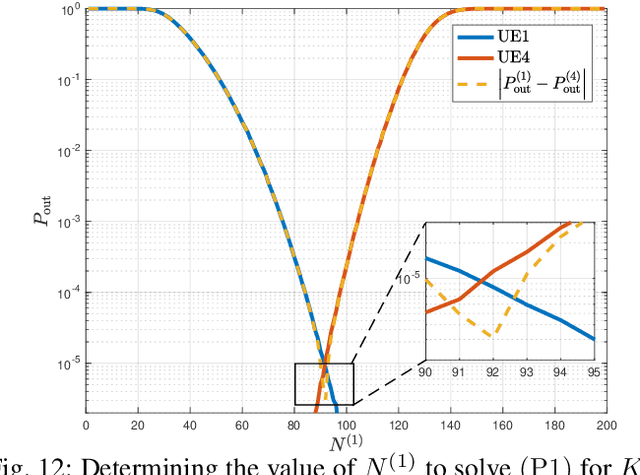
Abstract:Reconfigurable intelligent surfaces (RISs) bring great potential to the advancement of 6G and beyond wireless communication technologies. RISs introduce a great degree of flexibility, allowing some sort of virtual control over the wireless channel. Exploiting the flexibility introduced by RISs, we propose a novel RIS-enabled downlink (DL) non-orthogonal multiple access (NOMA) scheme where NOMA is enabled over-the-air rather than at the base station (BS) or the receiver (Rx). Here, the RIS is partitioned into distinctive groups where each part of the RIS serves a different user equipment (UE) to perform multiple accessing. The BS transmits an unmodulated signal to the RIS, and each partition modulates the impinging signal over-the-air by introducing a phase shift according to the incoming information bits to serve the corresponding UE. First, the end-to-end system model for the proposed system is presented. Furthermore, outage probability calculations, theoretical error probability analysis, and bit error rate (BER) derivations are discussed and reinforced with comprehensive computer simulation results.
Clustering Students Based on Gamification User Types and Learning Styles
Oct 22, 2023

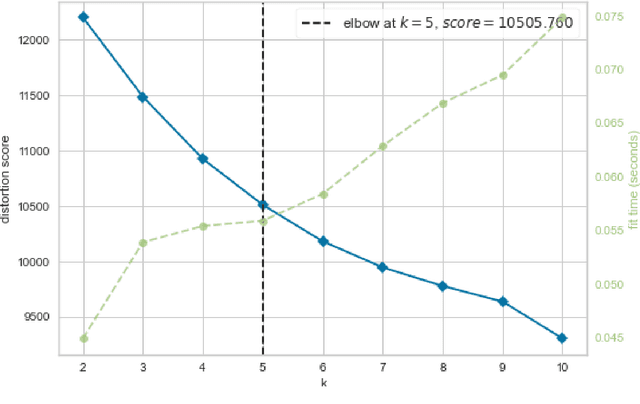
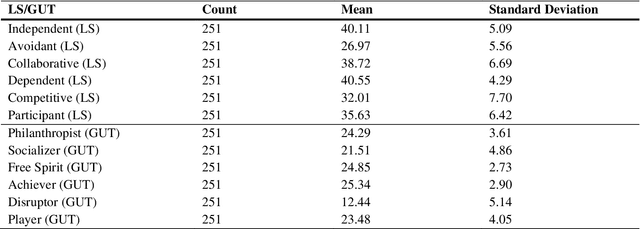
Abstract:The aim of this study is clustering students according to their gamification user types and learning styles with the purpose of providing instructors with a new perspective of grouping students in case of clustering which cannot be done by hand when there are multiple scales in data. The data used consists of 251 students who were enrolled at a Turkish state university. When grouping students, K-means algorithm has been utilized as clustering algorithm. As for determining the gamification user types and learning styles of students, Gamification User Type Hexad Scale and Grasha-Riechmann Student Learning Style Scale have been used respectively. Silhouette coefficient is utilized as clustering quality measure. After fitting the algorithm in several ways, highest Silhouette coefficient obtained was 0.12 meaning that results are neutral but not satisfactory. All the statistical operations and data visualizations were made using Python programming language.
Network-Independent and User-Controlled RIS: An Experimental Perspective
Aug 15, 2023Abstract:The march towards 6G is accelerating and future wireless network architectures require enhanced performance along with significant coverage especially, to combat impairments on account of the wireless channel. Reconfigurable intelligent surface (RIS) technology is a promising solution, that has recently been considered as a research topic in standards, to help manipulate the channel in favor of users needs. Generally, in experimental RIS systems, the RIS is either connected to the transmitter (Tx) or receiver (Rx) through a physical backhaul link and it is controlled by the network and requires significant computation at the RIS for codebook (CB) designs. In this paper, we propose a practical user-controlled RIS system that is isolated from the network to enhance communication performance and provide coverage to the user based on its location and preference. Furthermore, a low-complexity algorithm is proposed to aid in CB selection for the user, which is performed through the wireless cloud to enable a passive and energy efficient RIS. Extensive experimental test-bed measurements demonstrate the enhanced performance of the proposed system while both results match and validate each other.
Reconfigurable Intelligent Surface Enabled Over-the-Air Uplink Non-orthogonal Multiple Access
Aug 06, 2022Abstract:Innovative reconfigurable intelligent surface (RIS) technologies are rising and recognized as promising candidates to enhance 6G and beyond wireless communication systems. RISs acquire the ability to manipulate electromagnetic signals, thus, offering a degree of control over the wireless channel and the potential for many more benefits. Furthermore, active RIS designs have recently been introduced to combat the critical double fading problem and other impairments passive RIS designs may possess. In this paper, the potential and flexibility of active RIS technology are exploited for uplink systems to achieve virtual non-orthogonal multiple access (NOMA) through power disparity over-the-air rather than controlling transmit powers at the user side. Specifically, users with identical transmit power, path loss, and distance can communicate with a base station sharing time and frequency resources in a NOMA fashion with the aid of the proposed hybrid RIS system. Here, the RIS is partitioned into active and passive parts and the distinctive partitions serve different users aligning their phases accordingly while introducing a power difference to the users' signals to enable NOMA. First, the end-to-end system model is presented considering two users. Furthermore, outage probability calculations and theoretical error probability analysis are discussed and reinforced with computer simulation results.
Over-the-Air Equalization with Reconfigurable Intelligent Surfaces
Jun 29, 2021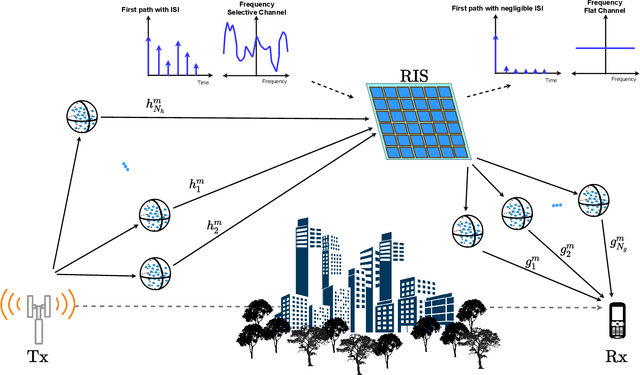
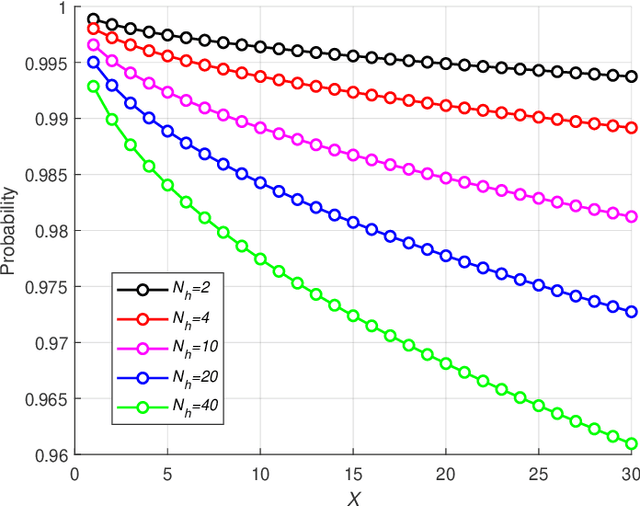
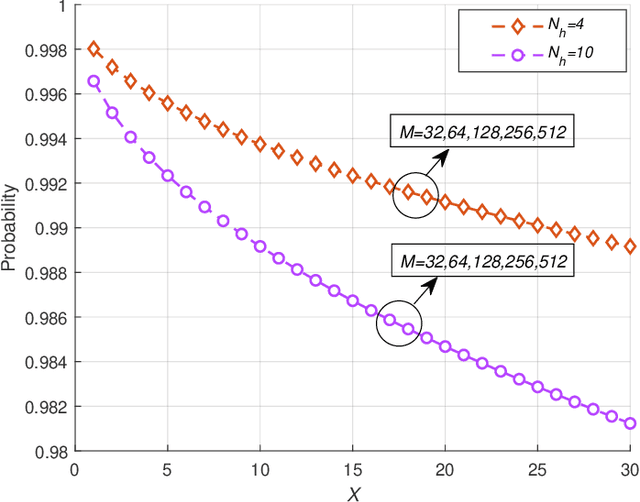
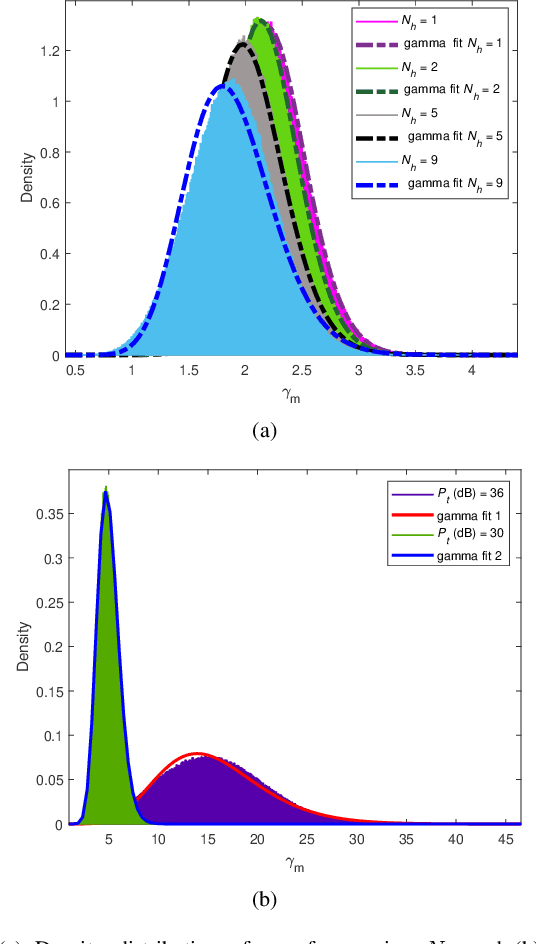
Abstract:Reconfigurable intelligent surface (RIS)-empowered communications is on the rise and is a promising technology envisioned to aid in 6G and beyond wireless communication networks. RISs can manipulate impinging waves through their electromagnetic elements enabling some sort of a control over the wireless channel. In this paper, the potential of RIS technology is explored to perform equalization over-the-air for frequency-selective channels whereas, equalization is generally conducted at either the transmitter or receiver in conventional communication systems. Specifically, with the aid of an RIS, the frequency-selective channel from the transmitter to the RIS is transformed to a frequency-flat channel through elimination of inter-symbol interference (ISI) components at the receiver. ISI is eliminated by adjusting the phases of impinging signals particularly to maximize the incoming signal of the strongest tap. First, a general end-to-end system model is provided and a continuous to discrete-time signal model is presented. Subsequently, a probabilistic analysis for the elimination of ISI terms is conducted and reinforced with computer simulations. Furthermore, a theoretical error probability analysis is performed along with computer simulations. It is demonstrated that with the proposed method, ISI can successfully be eliminated and the RIS-aided communication channel can be converted from frequency-selective to frequency-flat.
 Add to Chrome
Add to Chrome Add to Firefox
Add to Firefox Add to Edge
Add to Edge